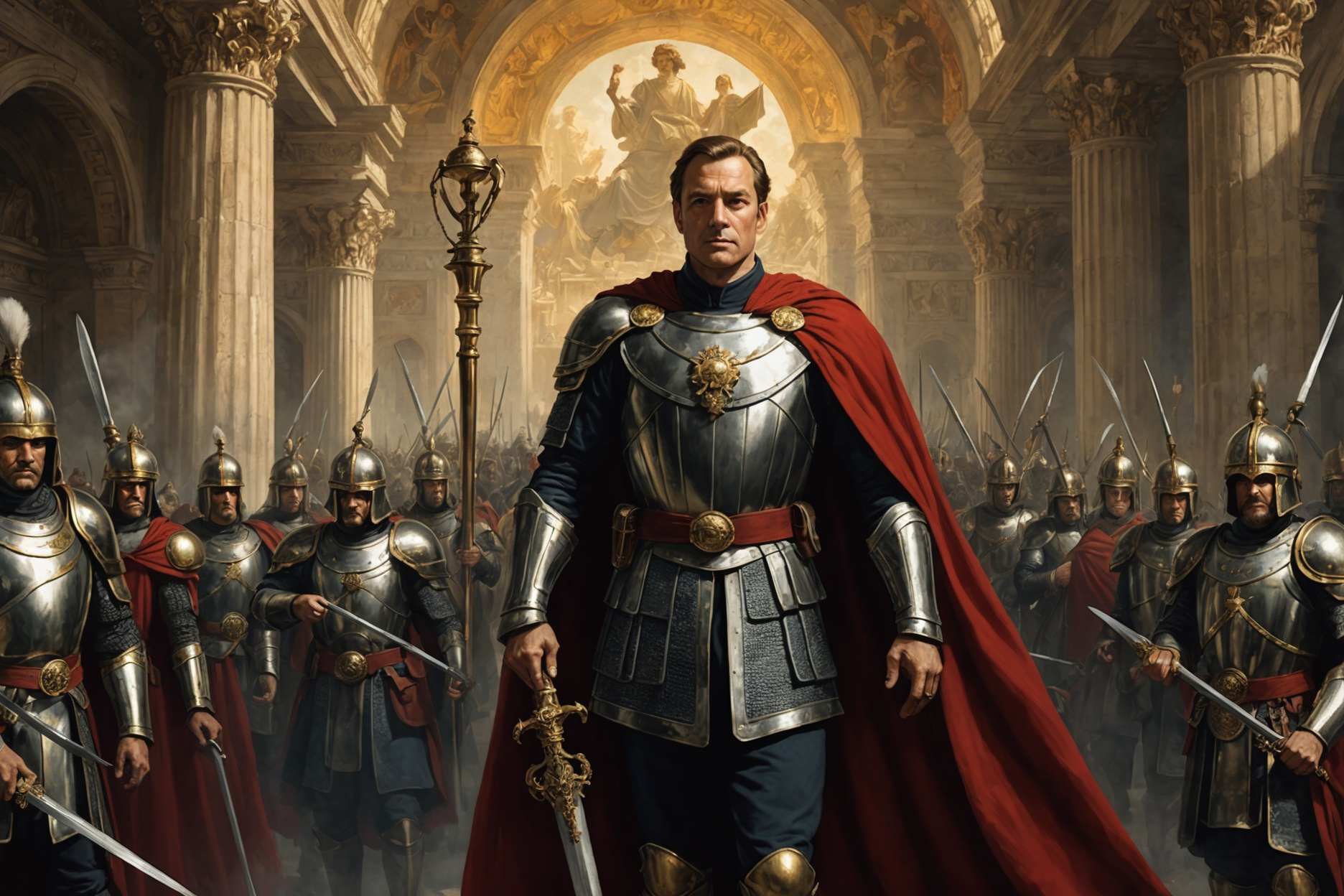Revealing the Incomparable Realms: An Excursion through Power and Inheritance

The ascent and fall of domains intrigues us, featuring the temporariness, everything being equal. How do realms accomplish huge power and impact, just to decline eventually? This article investigates the accounts of five of the most impressive realms ever, noticing that the meaning of solidarity is abstract and fluctuates by models.
The Roman Domain
The Roman Domain epitomizes unrivaled power ever. Past military may, the Romans exhibited social complexity that pulled in vanquished districts. Their compositional marvels, logical headways, and philosophical commitments structure the bedrock of the advanced world. Also, Roman regulation essentially affected later overall sets of laws, and their legislative designs keep on impacting present day organizations. Albeit struggles under the surface and emergencies accelerated its fall, the domain's tactical strength and enduring heritage continued from 31 B.C.E. to 1453 C.E.
The (First) Persian Realm
Established by Cyrus the Incomparable in 550 B.C.E., the Achaemenid Persian Realm altogether affected resulting domains and developments. With a different populace, it represented a tremendous region that associated North Africa, Focal Asia, the Center East, Europe, India, and the Mediterranean. The Persian Realm advanced harmony and accomplished significant progressions, for example, a powerful postal framework, a broad street organization, ethnic independence, a typical language known as Royal Aramaic, and an efficient organization. Despite the fact that its triumph by Alexander the Incomparable in 330 B.C.E. finished its rule, its heritage lived on.
The Caliphate
Arising out of Muhammad's lessons, the Middle Easterner Realm, or Caliphate, flourished under the initiative of the four Appropriately Directed Caliphs until 661 C.E. This realm accomplished noteworthy military triumphs driven by intense devotion. The Middle Easterner Domain associated various focuses of civilization spreading over Europe, Focal Asia, Africa, India, and China. It left an enduring inheritance through the spread of Islam, exchange, and the headway of information that prompted improvements like variable based math. The Caliphate started to decrease in the tenth century C.E. as opponent lines arose.
The Mongol Realm
Opposing assumptions, the Mongol Domain, drove by Genghis Khan and his replacements, accomplished remarkable triumphs against essentially bigger and all the more impressive foes. With only 2,000,000 Mongols, they vanquished rambling districts, including Russia, China, and the Center East. Their tactical techniques and traveling flexibility imparted dread in their enemies, yet the realm debilitated because of its authoritative failures over such tremendous domains.
The English Realm
The English Realm significantly reshaped the contemporary world. Its organizations and philosophies laid out an establishment for current administration, impacting scholars like Montesquieu and illuminating ideas regarding law and order, progressivism, social equality, and exchange. Monetary authority, hierarchical proficiency, and maritime predominance situated the English Domain as a worldwide force to be reckoned with. Their intermittent losses, combined with prominent triumphs, solidified their status as a superior realm.
The records of these five strong realms show human aspiration, flexibility, and the passing idea of force. While every realm showed one of a kind qualities and inheritances, they shared a typical destiny \x1 ultimately surrendering to inward conflict, outer dangers, or the intricacies of administration. By thinking about their authentic significance, we recognize that domains, no matter what their magnificence, are eventually dependent upon the constant entry of time.
The Roman Domain
The Roman Domain epitomizes unrivaled power ever. Past military may, the Romans exhibited social complexity that pulled in vanquished districts. Their compositional marvels, logical headways, and philosophical commitments structure the bedrock of the advanced world. Also, Roman regulation essentially affected later overall sets of laws, and their legislative designs keep on impacting present day organizations. Albeit struggles under the surface and emergencies accelerated its fall, the domain's tactical strength and enduring heritage continued from 31 B.C.E. to 1453 C.E.
The (First) Persian Realm
Established by Cyrus the Incomparable in 550 B.C.E., the Achaemenid Persian Realm altogether affected resulting domains and developments. With a different populace, it represented a tremendous region that associated North Africa, Focal Asia, the Center East, Europe, India, and the Mediterranean. The Persian Realm advanced harmony and accomplished significant progressions, for example, a powerful postal framework, a broad street organization, ethnic independence, a typical language known as Royal Aramaic, and an efficient organization. Despite the fact that its triumph by Alexander the Incomparable in 330 B.C.E. finished its rule, its heritage lived on.
The Caliphate
Arising out of Muhammad's lessons, the Middle Easterner Realm, or Caliphate, flourished under the initiative of the four Appropriately Directed Caliphs until 661 C.E. This realm accomplished noteworthy military triumphs driven by intense devotion. The Middle Easterner Domain associated various focuses of civilization spreading over Europe, Focal Asia, Africa, India, and China. It left an enduring inheritance through the spread of Islam, exchange, and the headway of information that prompted improvements like variable based math. The Caliphate started to decrease in the tenth century C.E. as opponent lines arose.
The Mongol Realm
Opposing assumptions, the Mongol Domain, drove by Genghis Khan and his replacements, accomplished remarkable triumphs against essentially bigger and all the more impressive foes. With only 2,000,000 Mongols, they vanquished rambling districts, including Russia, China, and the Center East. Their tactical techniques and traveling flexibility imparted dread in their enemies, yet the realm debilitated because of its authoritative failures over such tremendous domains.
The English Realm
The English Realm significantly reshaped the contemporary world. Its organizations and philosophies laid out an establishment for current administration, impacting scholars like Montesquieu and illuminating ideas regarding law and order, progressivism, social equality, and exchange. Monetary authority, hierarchical proficiency, and maritime predominance situated the English Domain as a worldwide force to be reckoned with. Their intermittent losses, combined with prominent triumphs, solidified their status as a superior realm.
The records of these five strong realms show human aspiration, flexibility, and the passing idea of force. While every realm showed one of a kind qualities and inheritances, they shared a typical destiny \x1 ultimately surrendering to inward conflict, outer dangers, or the intricacies of administration. By thinking about their authentic significance, we recognize that domains, no matter what their magnificence, are eventually dependent upon the constant entry of time.
latest_posts
- 1
 Step by step instructions to Safeguard Your Teeth During Sports Exercises
Step by step instructions to Safeguard Your Teeth During Sports Exercises - 2
 The race is on to turn your body into a GLP-1 factory
The race is on to turn your body into a GLP-1 factory - 3
 What is Fusarium graminearum, the fungus a Chinese scientist pleaded guilty to smuggling into the US?
What is Fusarium graminearum, the fungus a Chinese scientist pleaded guilty to smuggling into the US? - 4
 Vote in favor of your Favored Travel Movement
Vote in favor of your Favored Travel Movement - 5
 Ukraine proved this drone-killer works. Now, the West is giving it a shot.
Ukraine proved this drone-killer works. Now, the West is giving it a shot.
share_this_article
 Unwinding History's Secrets: Looking for the Response to Antiquated Human advancements
Unwinding History's Secrets: Looking for the Response to Antiquated Human advancements Overhaul Your Rest: Tips for a Peaceful Evening
Overhaul Your Rest: Tips for a Peaceful Evening What's A Decent FICO rating?
What's A Decent FICO rating? Instructions to Shield Your Gold Speculation from Possible Dangers: Fundamental Protections
Instructions to Shield Your Gold Speculation from Possible Dangers: Fundamental Protections What's the Fate of 5G Innovation?
What's the Fate of 5G Innovation? Examination In progress into Abuse of Japanese Government-Supported Advance
Examination In progress into Abuse of Japanese Government-Supported Advance Help Your Efficiency: 10 Authoritative Apparatuses to Attempt
Help Your Efficiency: 10 Authoritative Apparatuses to Attempt Instructions to Perform Fundamental Upkeep on Your Slam 1500.
Instructions to Perform Fundamental Upkeep on Your Slam 1500. Manual for Purchasing a Modest Jeep Wrangler for Seniors
Manual for Purchasing a Modest Jeep Wrangler for Seniors













